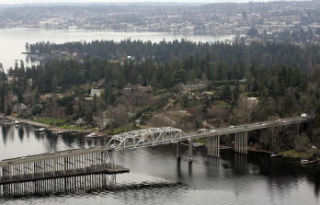If people have their way, tolls will be put on the 520 bridge as soon as next year.
That was one of the conclusions from a series of open houses and surveys conducted by the 520 Tolling Implementation Committee. The committee was created by the Legislature last year to evaluate tolls as a means of helping pay for a floating bridge replacement. The Legislature asked for a financing plan including $1.5 billion to $2 billion in tolls.
The committee evaluated 10 scenarios with tolls on the 520 bridge or tolls on both the 520 and I-90 bridges. A total of 59 percent of those responding to a Web survey supported tolls on the 520 bridge by as early as 2010. In a phone survey, 64 percent of respondents supported that idea.
The phone survey also showed that most people support the idea of tolling both I-90 and 520. Not surprisingly, those who use I-90, in particular Mercer Island residents, opposed the idea. More people supported I-90 tolls if the money is used for I-90 improvements.
Among those willing to support tolling, variable tolling was supported as a way to improve traffic conditions, the report said. Those who opposed the overall concept of tolling also opposed variable tolling.
Electronic tolling was also supported.
Tolls would raise between $654 million and $2.4 billion, the survey found. However, the most that a 520-only scenario would raise was $1.5 billion, the low end of a legislative target to raise money to help pay for the bridge replacement. Tolling both bridges met the legislative target, and four of five tolling scenarios exceeded the high end target of $2 billion.
Not surprisingly, tolling 520 as early as 2010 would raise more funds and reduce the cost of borrowing more than tolling that begins in 2016.
Starting in 2010 would also allow the state to make use of $154 million in federal funds from the USDOT Urban Partnership Agreement.
The survey also revealed:
• When tolls are in place, volumes go down and speeds improve on the tolled facility.
• If tolls are placed on both bridges, traffic volumes go down and speeds improve on both bridges.
• Speeds decrease on alternative routes. However, the decrease is less than the speed improvements on the tolled routes.
• Tolling starting in 2010 improves traffic flow in the 520 corridor when tolls are in place.
The survey also found that tolls would make some people take transit, carpool or vanpools. Also, people would shift the time of day of their trip or change their destination with tolls in place.
The survey information now goes to the Legislature.


